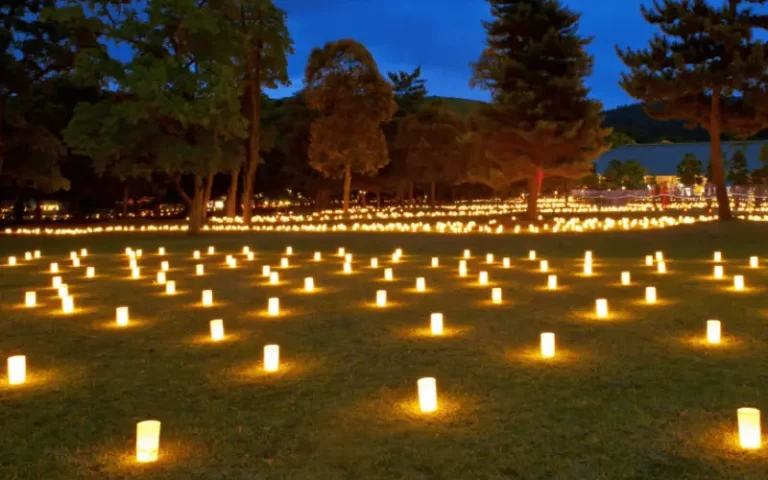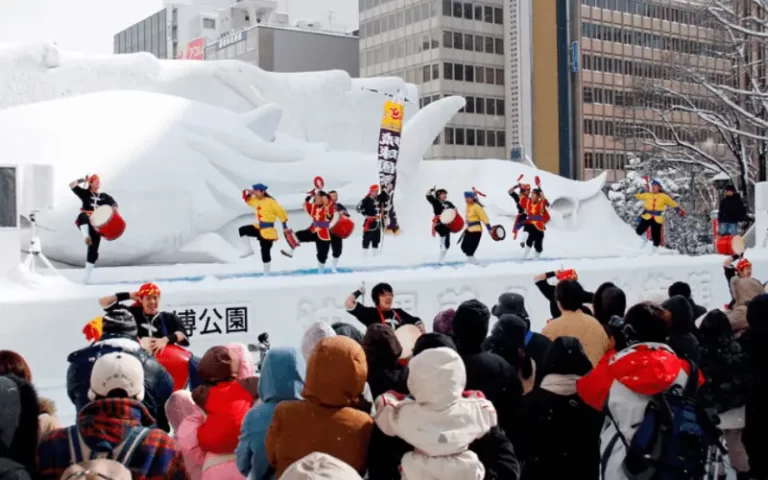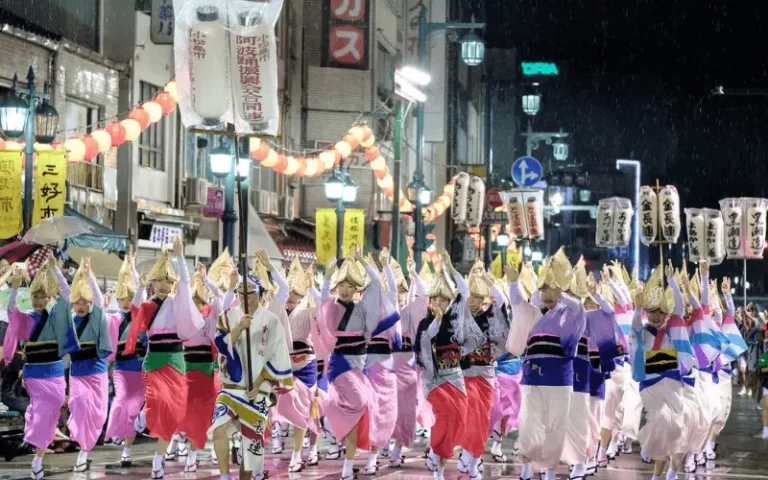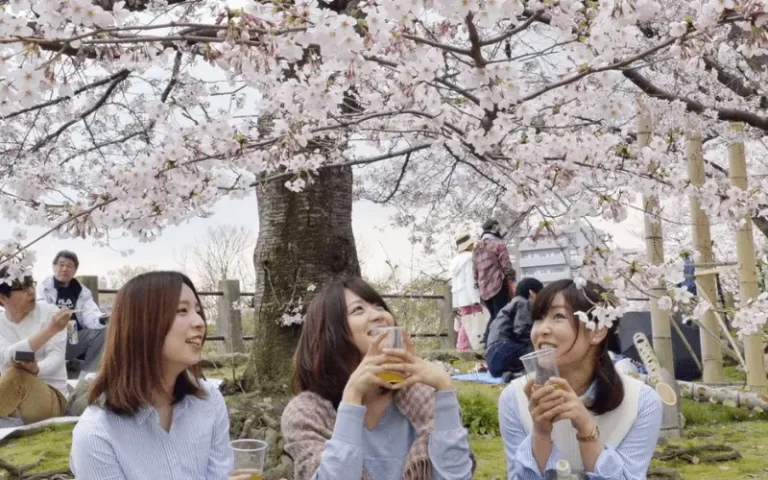Sanja Matsuri
Have you ever heard of Sanja Matsuri, which is also known as the Three Shrine Festival? It’s a major cultural and religious Festival that lights up Tokyo each year. Sanja Matsuri’s celebration takes place at the esteemed Asakusa Shrine, drawing crowds eager to pay homage to three influential figures who are related to the Sensō-ji Buddhist temple.
But what’s the story behind this festival, its historical significance, and how do people celebrate this festival? You’ll learn all about these things in this article.
But If you are interested in learning about more Japanese Festivals/ East Asian Holidays then click on the given link Japanese Festivals/ East Asian Holidays
What’s the Sanja Matsuri Festival?
Sanja Matsuri, also known as the Three Shrine Festival, is a vibrant religious celebration of Tokyo. It takes place at Asakusa Shrine, paying homage to three vital figures behind the creation of the Sensō-ji Buddhist temple. This revered festival holds deep religious and cultural importance. With colorful parades and traditional music, it’s celebrated over three spirited days in the third weekend of every May, drawing both locals and visitors to take part in this festival.
What’s The History of Sanja Matsuri?
Sanja Matsuri, a traditional celebration, honors three special spirits. Long ago, two fishermen Hinokuma Hamanari and Hinokuma Takenari found a sacred statue in a river in 628. They were Influenced by a wealthy landlord Hajino Nakatomo and embraced Buddhism.
Then along with him, they built Tokyo’s oldest temple, Sensō-ji, where this statue now stands. This festival has been around since the 7th century and has different names. In the past, A powerful leader Shōgun Tokugawa Iemitsu built the Asakusa Shrine, in 1649 dedicated to these spirits, shaping the festival we celebrate today.
| Sanja Matsuri | Three Shrine Festival |
| Location | Asakusa Shrine in Tokyo |
| Frequency | annually |
| Duration | 3 days (Fri, Sat, Sun) May |
| Historical Significance | Commemorating the individuals tied to Sensō-ji temple’s creation |
| Key Events | Featuring various events like processions and dances |
| Attendance | Residents and Visitors. |
Location of Sanja Matsuri festival and How to get there?
Sanja Matsuri takes place at Asakusa Shrine in Tokyo, Japan. To get there you have to follow the ways given below:
Location: Asakusa Shrine and Sensoji Temple
These routes provide access to the Sanja Matsuri festival grounds, located near Asakusa Station, served by the Ginza Subway Line, Asakusa Subway Line, and Tobu Railway.
Now, let’s talk about the dates of the Sanja Matsuri festival.
When are the Sanja Matsuri Festival 2023,2024,2025, and 2026?
The dates of the Sanja Matsuri Festival 2023, 2024,2025 and 2026 are mentioned in the table below:
| Year | Dates of Sanja Matsuri Festival |
|---|---|
| 2023 | May 19 |
| 2024 | May 17 |
| 2025 | May 16 |
| 2026 | May 15 |
How do people celebrate the Sanja Matsuri Festival?
The celebration of Three Shrine Festival is celebrated usually on the third weekend of May in three days (Friday Saturday and Sunday). Sunday witnesses the most chaotic and longest celebrations. Here’s a quick look at what happens each day.
Day 1: Friday

Starts with a grand procession known as Daigyōretsu. A vibrant procession kicks off near Sensōji Temple at 1:00 PM JST. The parade, featuring lively dances and traditional floats, travels through Asakusa Station, Nakamise Street, concluding with celebratory dances at Asakusa Shrine by 2:20 PM JST to celebrate the arrival of possession.
Day 2: Saturday

At Noon JST Local mikoshi parades start from Asakusa Shrine. These portable shrines move through the neighborhood, adding to the festival’s allure. Then there will be a mesmerizing shrine maiden dance performance at 4:00 PM JST.
Day 3: Sunday
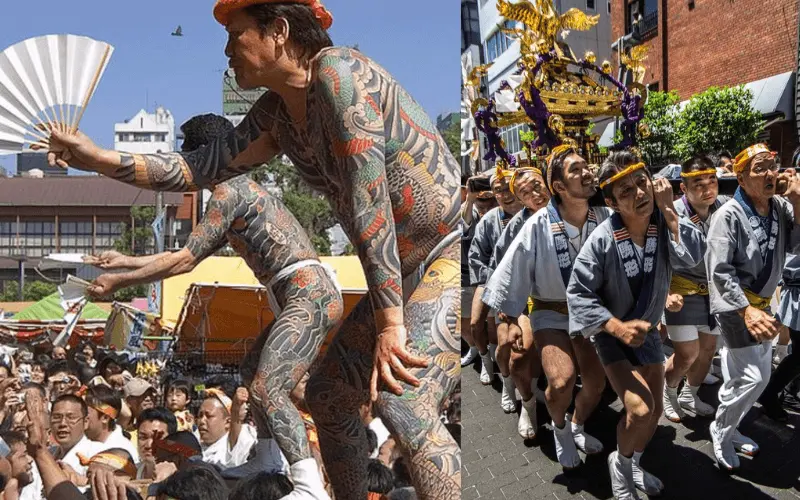
8:00 AM – 8:00 PM JST Sunday is the peak of excitement. You will Witness bustling streets filled with mikoshi parades navigating through Asakusa and the shrine. Features a procession of revered Asakusa Shrine-owned mikoshi through 44 districts.
Later, from 2:00 PM to 4:00 PM JST, be enthralled by shrine maiden dances and invigorating drum performances at Asakusa Shrine. Ending with a grand evening procession back to Asakusa Shrine
The festival is an exhilarating blend of colorful parades, vibrant dances, and lively performances, making it a unique and spirited celebration in Tokyo.
This is how Japanese people celebrate this beautiful festival.
Conclusion
The Sanja Matsuri festival is also known as the Three Shrine Festival. In Tokyo, it is celebrated annually in May. It’s a lively celebration where locals honor the spirits, carrying portable shrines through crowded streets, adorned with colorful banners and lively music. This festive unites communities, blending ancient customs with the spirit of togetherness, echoing joy and reverence across the cityscape.
Let me answer some of your questions about this topic.
Frequently Asked Questions
What happens in the Sanja Matsuri?
The Sanja Matsuri features lively processions of portable shrines, known as mikoshi, carried through Tokyo’s streets amid traditional music, dance, and vibrant celebrations.
What does Sanja mean in Japanese?
“Sanja” translates to “three shrines” in Japanese, representing the three Shinto shrines Asakusa Shrine, surrounding Tokyo’s Asakusa district central to this festival.
What is the biggest Shinto festival?
The Tenjin Matsuri in Osaka is one of Japan’s grandest Shinto festivals, held in honor of Sugawara no Michizane, featuring boat processions, performances, and fireworks, drawing huge crowds.


